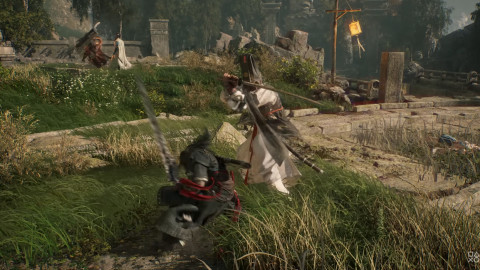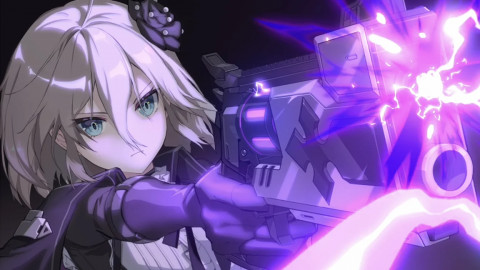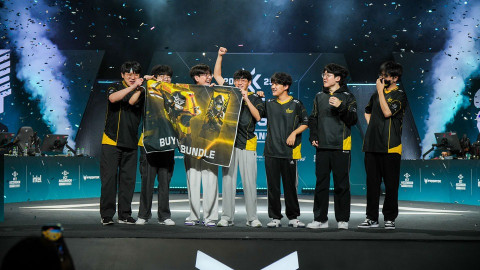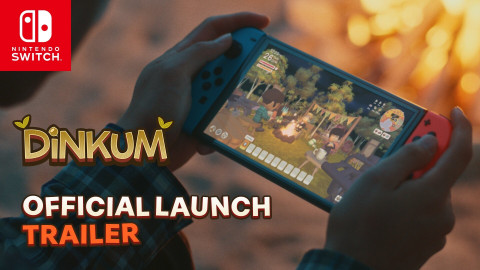I think recommending good games is also a job in itself, but these days, it's not that easy. In an era where full-price games are $90 or $100, saying "you must buy it" carries more weight. Also, video games are bound to reflect personal preferences.
So, it feels likes it's been 9,002 million years since I've last recommended and analyzed games like this. These three games are showing their own achievements, and there are clear reasons for that. They are Absolum, BALL x PIT, and Escape from Duckov.

▲ Three games that are performing exceptionally well in terms of sales and revenue among both major titles and indie releases
In fact, if you look at the bundled games, you might think,"They've just bundled some popular and affordable indie titles together."However, in reality, the genres are diverse, including belt-scrolling beat 'em ups, Arkanoid-like block breakers, and top-down shooters. But these different genres are precisely what makes them unique and worth bundling together. It's because they've expanded the interpretation of the roguelike genre and refined it into a complete and enjoyable experience.
RogueLog, Like, and Lite — and Just Roguelike
Let's start with the word roguelike. This term has become so widespread in today’s gaming landscape that it’s practically a genre of its own. It literally originates from the original game Rogue and is now as familiar to players as the genre’s immense popularity itself.
In fact, the Rogue itself, which was released 1980, was a very impressive game, and there were many games that tried to implement that look as much as possible within their own game styles, such as NetHack, Dungeon Crawl, and Mystery Dungeon. They were literally rogue-like, as in, "like" Rogue.
But as you all know, it’s hard to find anything similar to Rogue in roguelikes today.

▲ There used to bewere roguelike games that followed the original, but now there are fewer of them.
Rather, it contains only the elements that have become the core of the game Rogue. ▲ Through procedural generation, a technology that automatically generates data using algorithms, maps and objects are generated randomly. ▲ A Permadeath system, where you lose everything upon death. These two concepts of Rogue have been appropriately altered, diluted, and reinterpreted over time.Beyond the player's growth through death, developers have started to explore the idea of growth that remains even after death. Back in the days, death truly meant the end, but now, through evolution and genetics, players become stronger even after dying.
The emergence of these games has led to a long-standing movement to separate and characterize games with the indistinct features of Rogue as "rogue-lite". Particularly, as numerous games have embraced the roguelike label, a theory of distinction emerged. At the rRoguelike Developer Conference, there was even a movement to categorize the unique characteristics of roguelikes as the "Berlin Interpretation".
However, in contrast, the atmosphere of mixing among the public media and general fans has been getting stronger. The reason why the atmosphere of distinguishing roguelike and roguelite has been weakening is that there are fewer games that can be strictly called "roguelike", and many indie developers are releasing roguelite games. Large game companies are also releasing new modes that add roguelite elements to their games and promoting them as roguelikes.
A Roguelike That Lives on the Flavor of Action (So That I Believed)
It was probably after Spelunky that made roguelike games (I won't differentiate from now on) popular. This evolved into Rogue Legacy, Dead Cells, and so on, making people think of platformers when they hear the term "roguelike". On the other hand, the roguelike boom also spread to the gunplay and top-down shooter genres, with games like 'Enter the Gungeon' centered around 'The Binding of Isaac', and 'Hades' setting the standard for isometric view (quarter-view) roguelikes. Additionally, the auto-shooter boom led by 'Vampire Survivors' and the subsequent Vampire Survivors-like games are also games that utilize roguelike features.

▲ Random procedural generation of maps and objects highlights the roguelike features
If you look closely, you'll see that all of the games I've described are indie games that focus on action. This isn't just a coincidence or a trend. If you dig a little deeper, you'll see that the genre's characteristics are intertwined with the game's features.
The core of today's roguelike, which has been refined into roguelite, is "permanent enhancement" (meta- progression)'. Even if you die, the enhancement continues into the next playthrough . You die frequently, and you grow again with what you gained from it. This confuses the player. The skill you learn while dying and the growth from the items you obtain during the dying process happen simultaneously. This creates the illusion that "I'm getting better". And this illusion expands into the positive realms of play satisfaction and fun.
That's why a single playthrough of the game shouldn't be too long. You die often, and you have to quickly try again. This characteristic itself is well-suited for an action game that requires speed and feedback.

▲ Permanent Enhancement Becomes the Core of Growth
Changes in the gameplay flow are also cited as a reason. For today's streamering-friendly gaming generation, the roguelike is a form that can produce content optimized for video platforms. The infinite loop structure also aligns with this characteristic. Additionally, players who enjoy playing the game directly tend to feel satisfied with short-session play. This is one of the reasons why the battle royale genre has gained global popularity.
For indie developers, the roguelike's characteristics allow for a longerhigh content lifespan with lower development costs. The randomness during gameplay creates a different combination for each weapon and piece of equipment.
The so-called trend of the era and development efficiency are all pointing towards roguelike.
It's Not a Genre, It's a Mechanism
Let's talk about a game that's been missing. A game that can't be left out from the roguelike craze: Slay the Spire. It's a deck-building game. It's not a game that gives you instant player input feedback, but rather hat requires a lot of strategic thinking. Deck-building games are all about the long-term considerations of card combinations and how to use them to your advantage.
However, the game that adapted deck-building mechanics to roguelike has proven that deck building fits well with the genre. And many TCG and deck building games are introducing roguelike elements.
There are many opinions that roguelike has also entered the realm of developers' conventions. In other words, there are many games that follow in the footsteps of so-called successful games that have already been made by someone. However, today's games no longer have clear genre characteristics. Furthermore, roguelike is more about game mechanics and interpretation rather than specific game traits, making it more versatile. If someone shows success by utilizing roguelike in a new genre, it means that there is a foundation for the creation of truly unique roguelikes, not just another platformer or another deck-builder.
Those are the ones that are popular these days: Absolum, BALL x PIT, and Escape from Duckov

▲ Absolum, which is also recognized for the fun of belt-scrolling brawlerthe belt scroller itself
They each have a different genre, but they're leveraging the characteristics of roguelikes that haven't been tried much before. Specifically, procedural generation (of objects rather than maps), and permanent upgrades implementedbrought out in each genre are significant.
But You Still Need to Have the Basics
The characteristics of roguelike's attempt at a new genre . It may seem like that's the important part, but the real core comes from the game itself. If the roguelike's characteristics are the final seasoning that makes the gameplay more engaging, the game can still be engaging without them.
Developed by Dotemu and Guard Crush Games , who also worked on Lizardcube's Streets of Rage 4, Absolum was praised for its Impact from its intuitive controls, smooth animations and graphics, and the overall quality of the belt scroller belt-scrolling beat 'em up action itself, which even allows for multiplayer. Some critics even said that it should be played in a roguelike manner, breaking down the traditional beat 'em up action into smaller chunks. The authentic fantasy world also received praise from fans who were waiting for the feel of classic titles from the past.
BALL x PIT features Arkanoid-style block breaking. However, it reduces the stress of having to catch every shot and allows you to retrieve missed shots after a slight time penalty. This has resulted in an immersive experience of block breaking itself, while also giving you a playstyle similar to a horizontal-scrolling auto-shooter, like Vampire Survivors.

▲ BALL x PIT has turned the concept of breaking blocks into an auto-shooter flow
Escape from Duckov reminds me of Escape from Tarkov, but it is a game that focuses solely on PvE gameplay. This means that it has toned down the tension from PvPvE and made it more casual. Additionally, the visual stability of the top-down view and the more relaxed shooter gameplay make the game easier to enjoy. It also incorporates humor, which is a key element of recent popular games. However, the gunplay itself is well-crafted, allowing you to enjoy tight shooting mechanics, and the fun of the extraction genre is faithfully implemented.
A solid, fundamental game in its own right. It's more impressive because it's a genre that hasn't been associated with roguelike games in the past. Based on the completeness of the basic gameplay, it can be played repeatedly.
Of course, the fun of repetition, which has been proven to work in other genres, will probably lead to another belt-scrolling roguelike, another block-breaking roguelike. Just as Slay the Spire and opened up new genres. But on the other hand, it also suggests how important it is to understand and master new attempts, rather than being a characteristic of roguelikes adapted into certain genres.
And these games are priced around ₩20,000 (approximately $15 USD). In an era where it's daunting to recommend anything in the $100 price range, it's a reassuring choice to confidently recommend.

▲ Duckov, which has removes PVP elements from the extraction genre with strong repetitive elements to highlight roguelike mechanics.
This article was translated from the original that appeared on INVEN.
Sort by:
Comments :0







